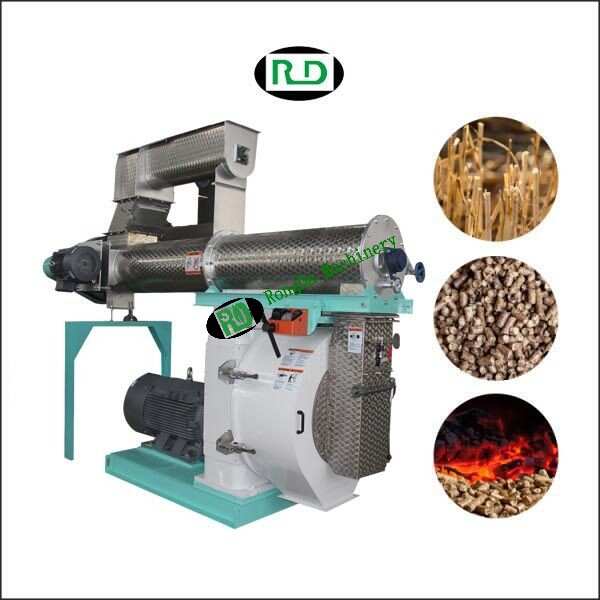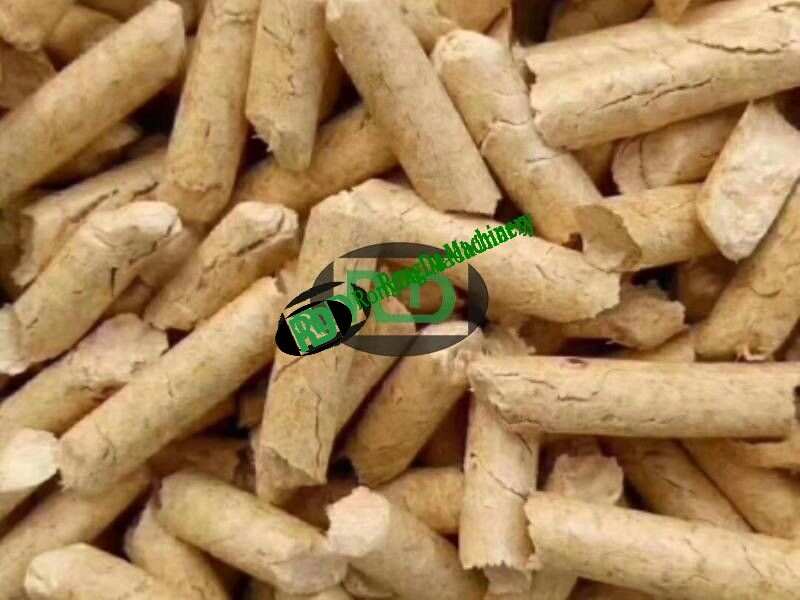Welcome to Rongda Machinery Co., Ltd
Toggle Navigation
As the world increasingly embraces sustainable energy alternatives, wood pellet mills are emerging as key players in addressing the energy challenges we face today. These state-of-the-art machines are helping to create clean, renewable energy solutions that contribute to both environmental and economic sustainability. In this article, we’ll delve into the mechanics of wood pellet mills, their environmental and economic benefits, and how they’re contributing to a greener, more energy-efficient future.

A wood pellet mill is an advanced machine designed to transform raw biomass—especially wood-based materials—into small, cylindrical pellets. These pellets, which are typically made from sawdust, wood shavings, and other organic waste, provide a renewable source of energy. Compared to conventional fuels, wood pellets are clean-burning and emit significantly fewer pollutants, making them an attractive heating and energy solution for both homes and businesses alike.
The pelletization process begins with raw biomass that is finely processed into smaller particles. Once ground, the material is fed into the pellet mill, where high pressure and temperature are applied. This process activates the natural lignin in the wood, binding the particles together to form compact, durable pellets. Once the pellets are created, they are cooled and can be packaged for use in heating systems, industrial operations, or even power plants.
The environmental impact of wood pellet mills is one of the primary reasons for their growing popularity. Below are several ways in which these mills contribute to a more sustainable world:
1. Carbon-Neutral Fuel
Wood pellets are often described as carbon-neutral because the carbon dioxide emitted when they are burned is approximately equal to the amount absorbed by the trees during their growth. This natural carbon cycle greatly reduces the carbon emissions compared to traditional fossil fuels, making them a far cleaner alternative.
2. Reducing Waste and Promoting Sustainability
Wood pellet mills often utilize byproducts from the timber industry, such as sawdust and wood shavings. These materials, which might otherwise be discarded or sent to landfills, are repurposed to create valuable biomass fuel, reducing waste and promoting a circular economy. By turning waste into energy, wood pellet mills contribute to a more sustainable resource cycle.
3. Lowering Emissions
When burned, wood pellets release fewer pollutants like sulfur dioxide and nitrogen oxides compared to traditional fossil fuels. This reduction in harmful emissions improves air quality and benefits public health, making wood pellets a cleaner choice for heating and energy.
4. Promoting Energy Independence
By investing in local wood pellet production, regions can decrease their reliance on imported fuels, bolstering local economies and enhancing energy security. Communities that produce their own renewable energy are better equipped to withstand energy supply disruptions, contributing to long-term resilience.
Wood pellet mills not only help the environment—they also bring economic advantages to local communities and industries. Here’s how:
1. Job Creation
The demand for wood pellets creates a wide range of jobs in industries such as manufacturing, transportation, and distribution. As the global demand for renewable energy sources continues to grow, the wood pellet industry can offer steady employment opportunities, benefiting local economies and workers.
2. Supporting Local Industries
The establishment of wood pellet mills can boost local industries, especially those related to forestry, logging, and biomass production. This symbiotic relationship between different sectors helps stimulate economic growth and build a robust, sustainable local economy.
3. Cost-Effective Energy Solutions
For homeowners and businesses with access to local biomass resources, wood pellets can provide an affordable alternative to traditional heating fuels. As pellet production technology improves and economies of scale are realized, the cost of producing wood pellets will likely decrease, making them even more accessible to a broader audience.
The versatility of wood pellets makes them a valuable resource for various applications:
1. Residential Heating
Many homeowners are turning to wood pellets as an efficient, eco-friendly alternative to heating with oil or gas. Pellet stoves and boilers offer a convenient and sustainable solution to home heating, providing warmth without the environmental cost associated with fossil fuels.
2. Industrial Use
Wood pellets are increasingly being used in industries such as manufacturing and agriculture. These industries rely on wood pellets to fuel boilers, kilns, and other equipment, providing a reliable, low-emission source of energy for large-scale operations.
3. Renewable Power Generation
Wood pellets are increasingly being used in power plants as a clean alternative to coal. Many power plants have converted to biomass energy, leveraging wood pellets to generate electricity while reducing their carbon footprint and supporting the shift to renewable energy sources.

Wood pellet mills represent a significant advancement in the pursuit of sustainable energy solutions. By creating a renewable, clean-burning fuel, these mills play a key role in reducing carbon emissions, promoting energy independence, and stimulating local economies. As we continue to move toward a more sustainable and energy-efficient future, investing in wood pellet mills will be crucial in addressing global challenges like climate change and resource depletion.
Whether you are a homeowner seeking an eco-friendly heating solution, a business exploring cost-effective energy options, or an environmentally conscious individual looking to support renewable energy, wood pellet mills offer a promising path forward. Embracing this technology can help build a greener, more sustainable world for future generations.